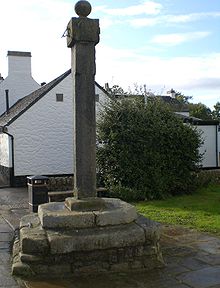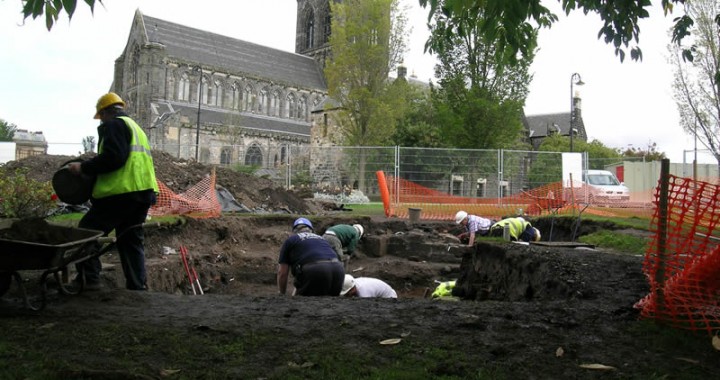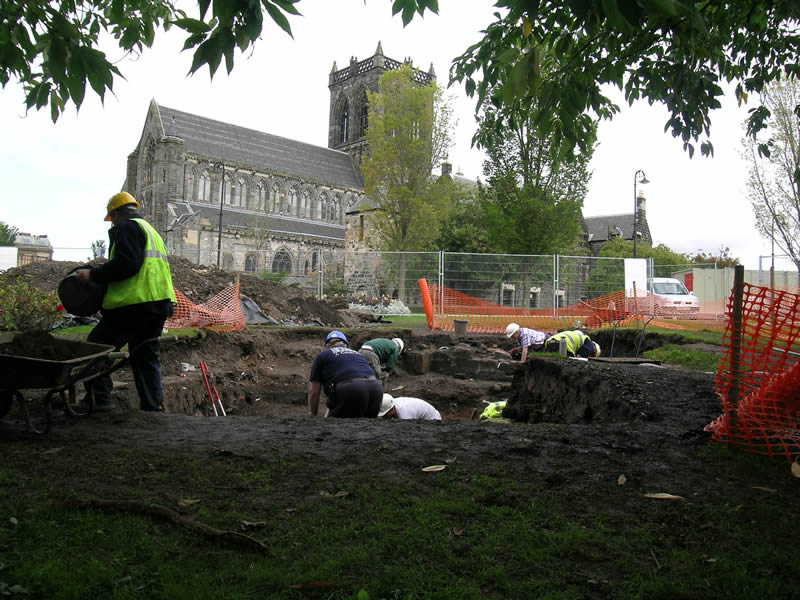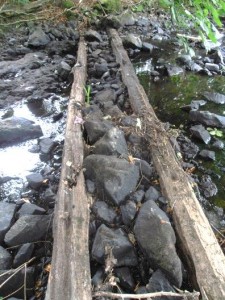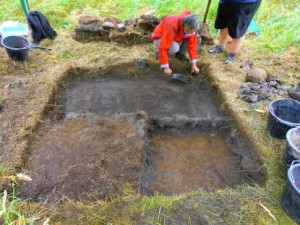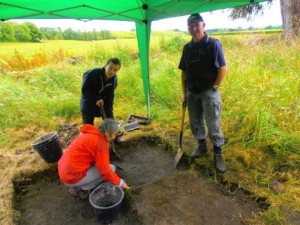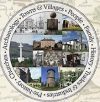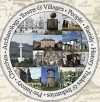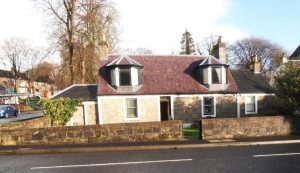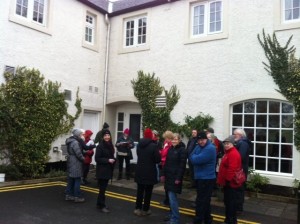William Hair was one of the earliest Kilbarchan men known to have settled in America. He was born in Kilbarchan 1694, the youngest of the four sons of William Hair and Margaret Gardiner. His father was a tenant farmer in Birdland who paid a total of one pound and three shillings in Poll Tax in 1695. Previously the family had lived in Weitlands (Wheatlands). At this time both settlements were fermtouns, small farming settlements usually tenanted by more than one family. Wheatlands still exists today, but Birdland (variously spelled Boreland and Boarland) is long gone.
As a young man William Hair, like many Scots, moved to Ulster where he worked as a farm labourer. This move was not as successful as he had hoped and William became disillusioned. He and a companion John Paterson, who may have been a John Paterson born at Locherside in Kilbarchan Parish in 1693, set sail from Londonderry on a ship bound for Boston, America, captained by a Captain Dennis.
In 1719 William and John are recorded as single farmers from Ireland who had recently arrived in the town. However, Boston did not want to support jobless new arrivals. William Hair, now in his mid-twenties, and John Paterson were chased out of town because they were single and jobless. From there, they made their way to Providence and then inland to Brookfield, still in Massechusetts, where new arrivals were made more welcome. In 1720 they were granted a sixty acre lot of land in the north of Brookfield beside Five Mile River, where they set up a Fulling Mill. William built his house on the site. In his youth William may have had some knowledge or experience in this early-mechanised industry in one of the two fulling mills (known as waulkmills in Scotland) on the Black Cart near Kilbarchan.
William Hair was married three times and, between 1725 and 1755, fathered a large family of seven sons and seven daughters. When he married his first wife Elizabeth Owen in 1725, he was designated ‘a clothier, and first of the name in Brookfield’. Elizabeth was only fourteen years old when they married. Sadly, in the same year their first child Jane died in infancy. John Paterson and his wife Mary had a son John, born in 1724, and a daughter, Margaret born in 1726.
Both men still resided in Brookfield in 1748 when sixty-six tax-payers signed a petition to the Town Clerk of Brookfield asking for a second precinct with Parish privileges and a meeting house to be set up in the north of the town. Among the signatories were William Hair, John Paterson, sen., and John Paterson, jun. The proposal in the petition was rejected and after continued pressure the matter went to the House of Representatives, on March 25th, 1750. Eventually in 1754 an Act was passed, establishing the new Precinct. A congregational Meeting House was built and a Mr Forbush was appointed as minister.
William’s large family and their descendants, like most eighteenth century Americans, volunteered in the various American conflicts and wars which ravaged the country. Some family members were active in the frontier wars against the native Indians. William’s three eldest sons, Abraham, John and William fought for the British troops in the wars against the French in the 1750s. Twenty years later Abraham Hair fought against the British in the American War of Independence. John Paterson, jun. also fought for independence as a volunteer from Brookfield in Captain Nathan Hamilton’s company stationed at Ticonderoga Mills in 1776-7. In 1786, after Independence had been won, Hair family members supported local Brookfield man, Daniel Shay, in an insurrection by Massachusetts veterans and farmers to address economic grievances. This was known as Shay’s Rebellion.
Despite ancient wars and conflicts, descendants of William Hair from Kilbarchan still live in New England almost 300 years after William Hair arrived in Boston. Research into the family was inspired by an enquiry, to Renfrewshire Local History Forum from a descendant, Richard Hare of New York who, perhaps following the family tradition, was a USAF Captain in Vietnam.
© 2014 Helen Calcluth
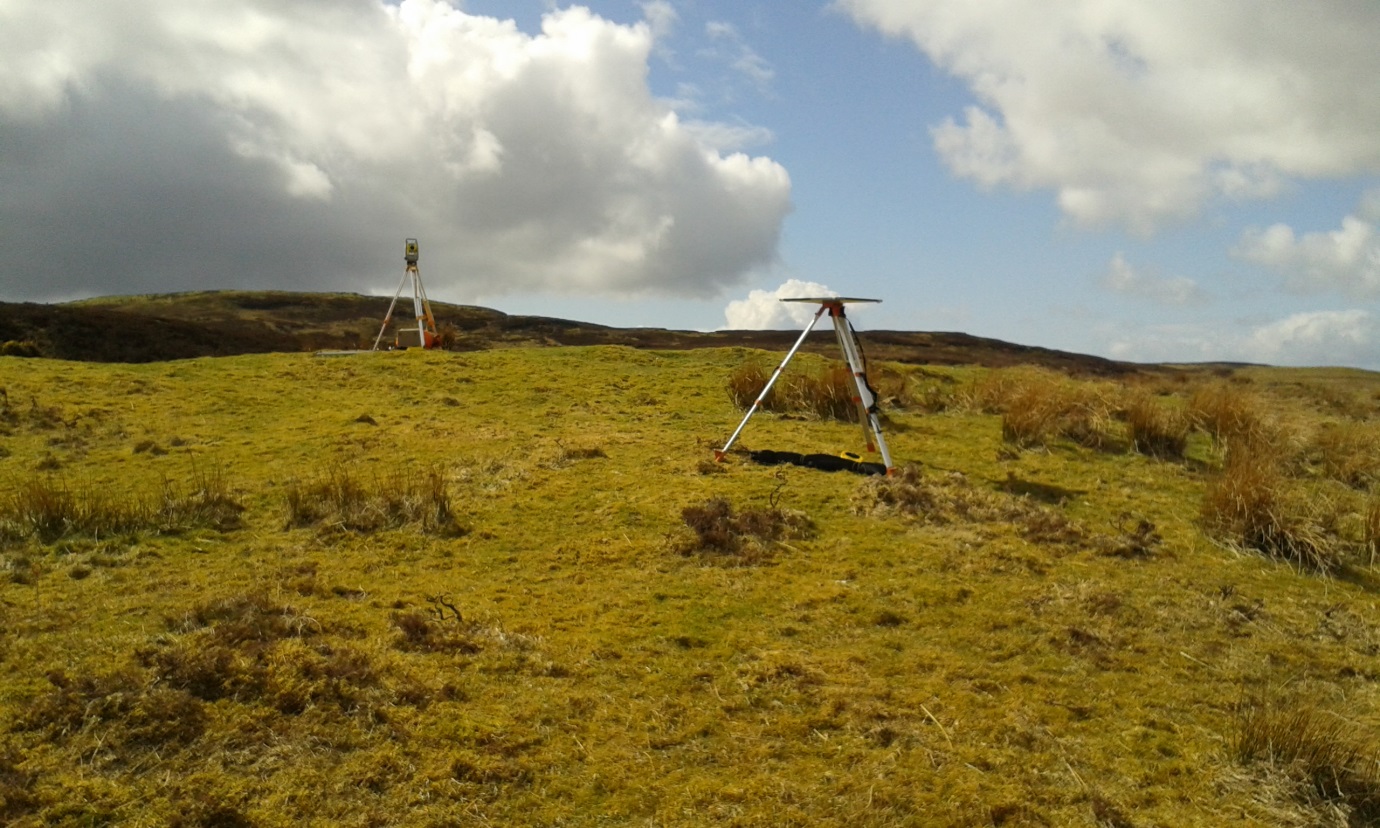
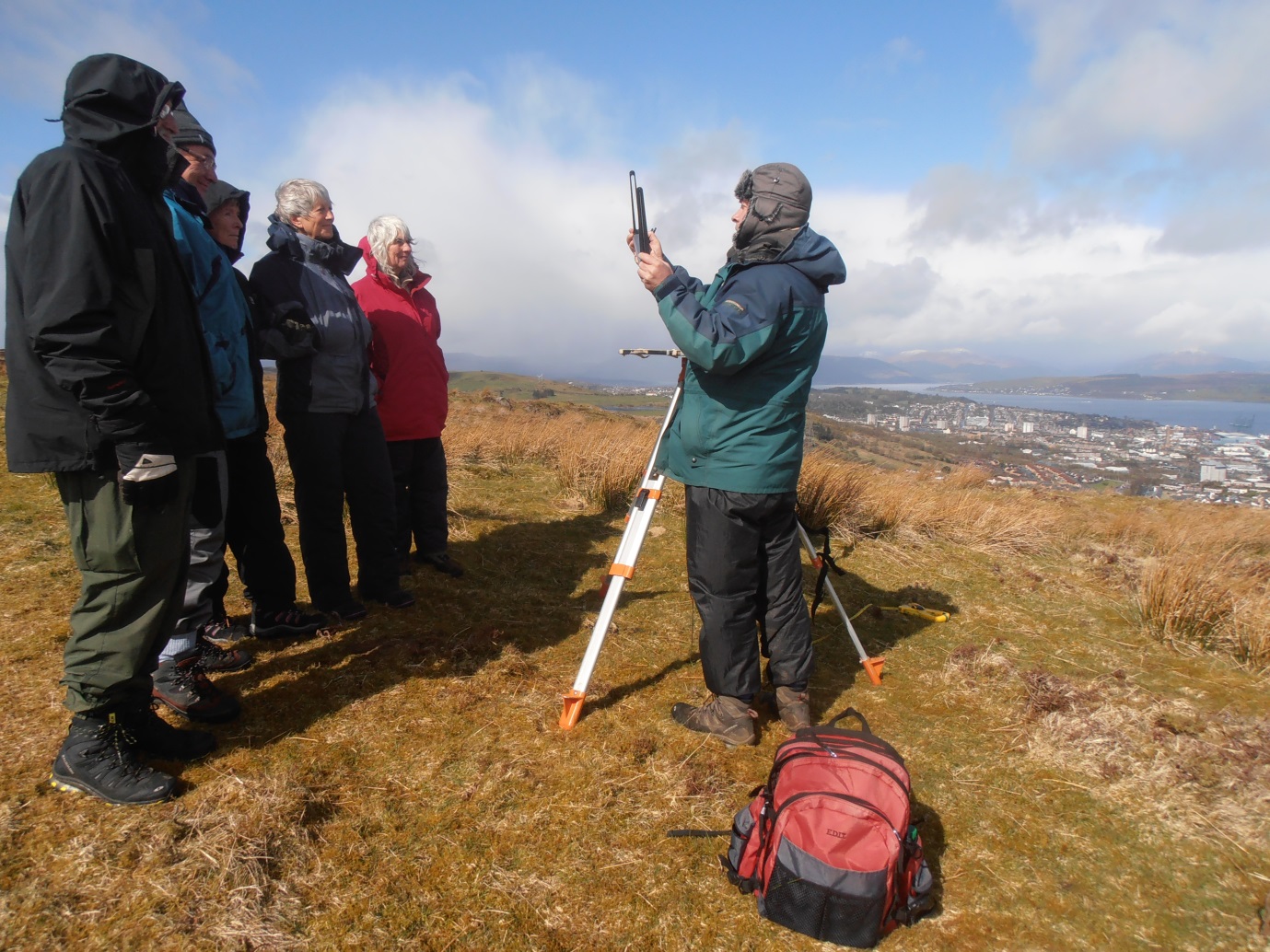
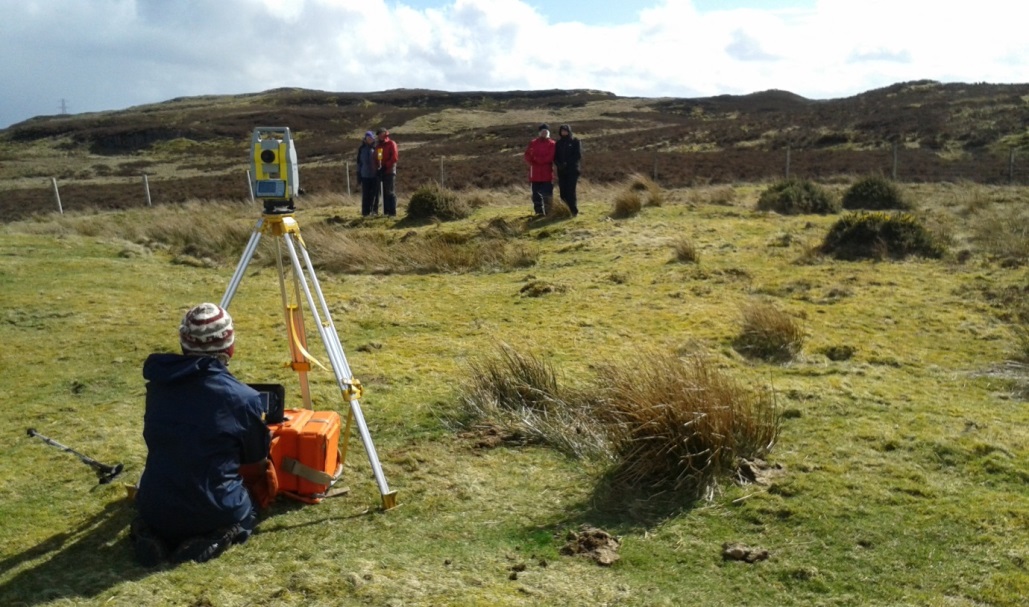
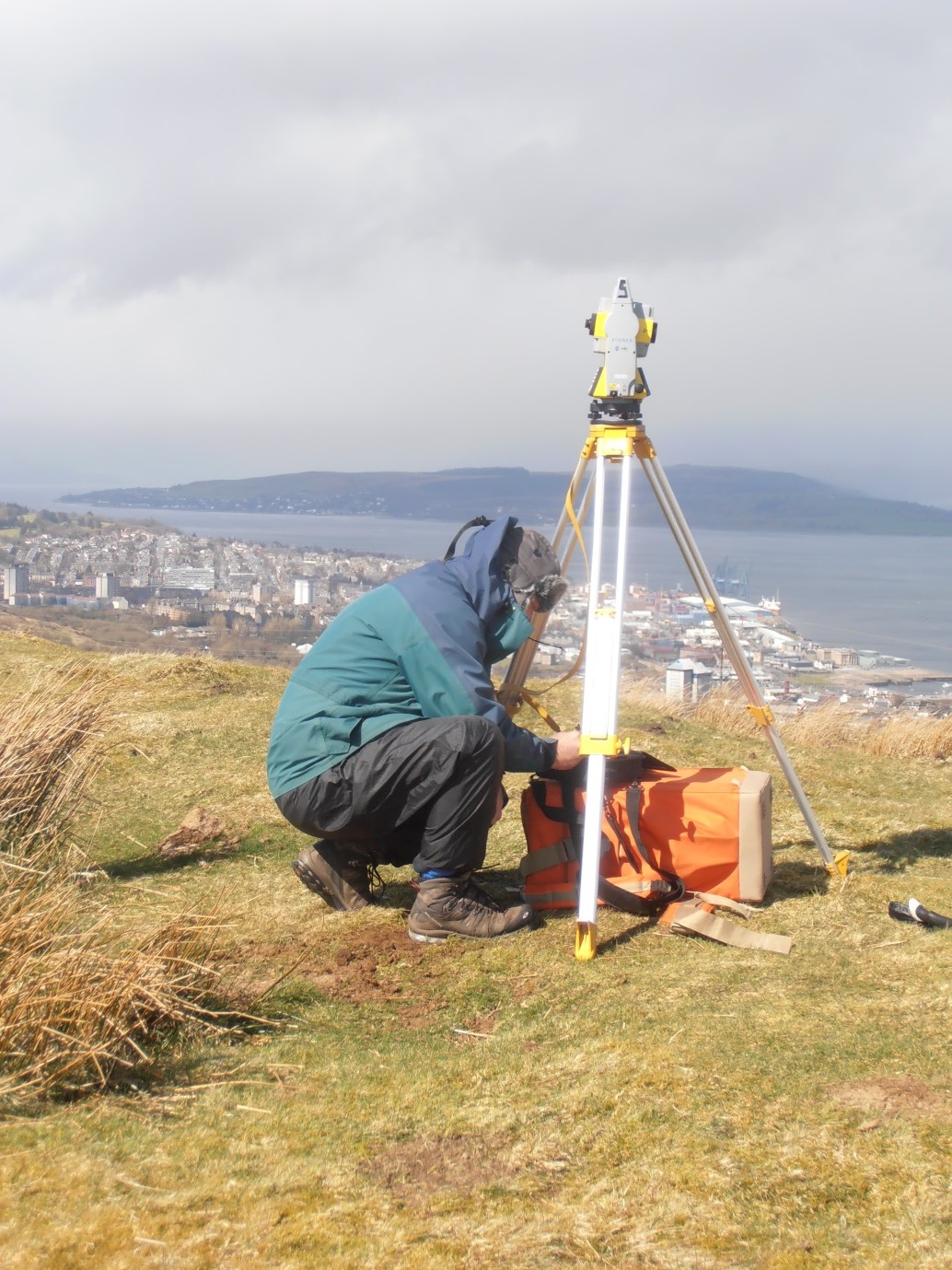

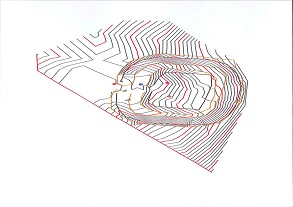
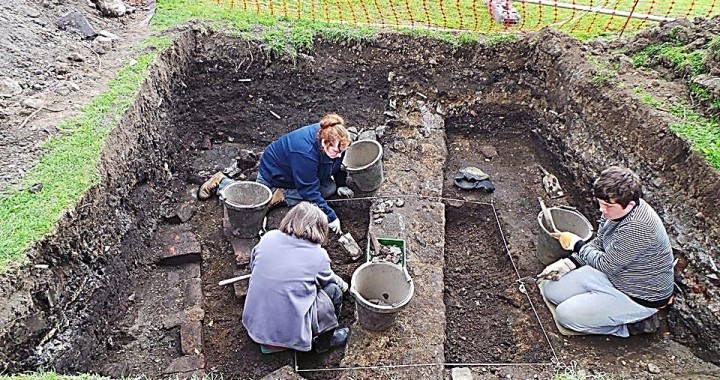



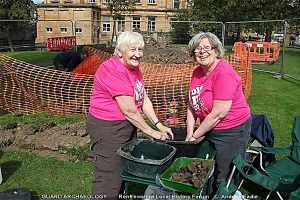
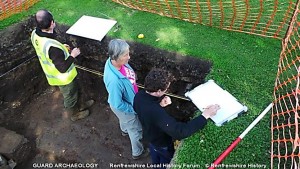
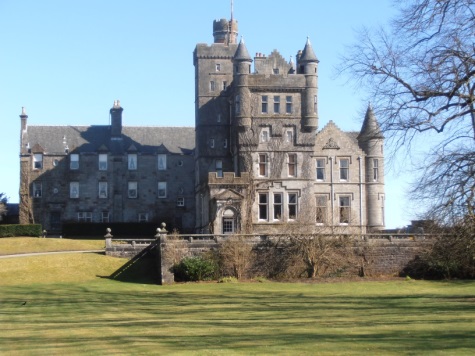
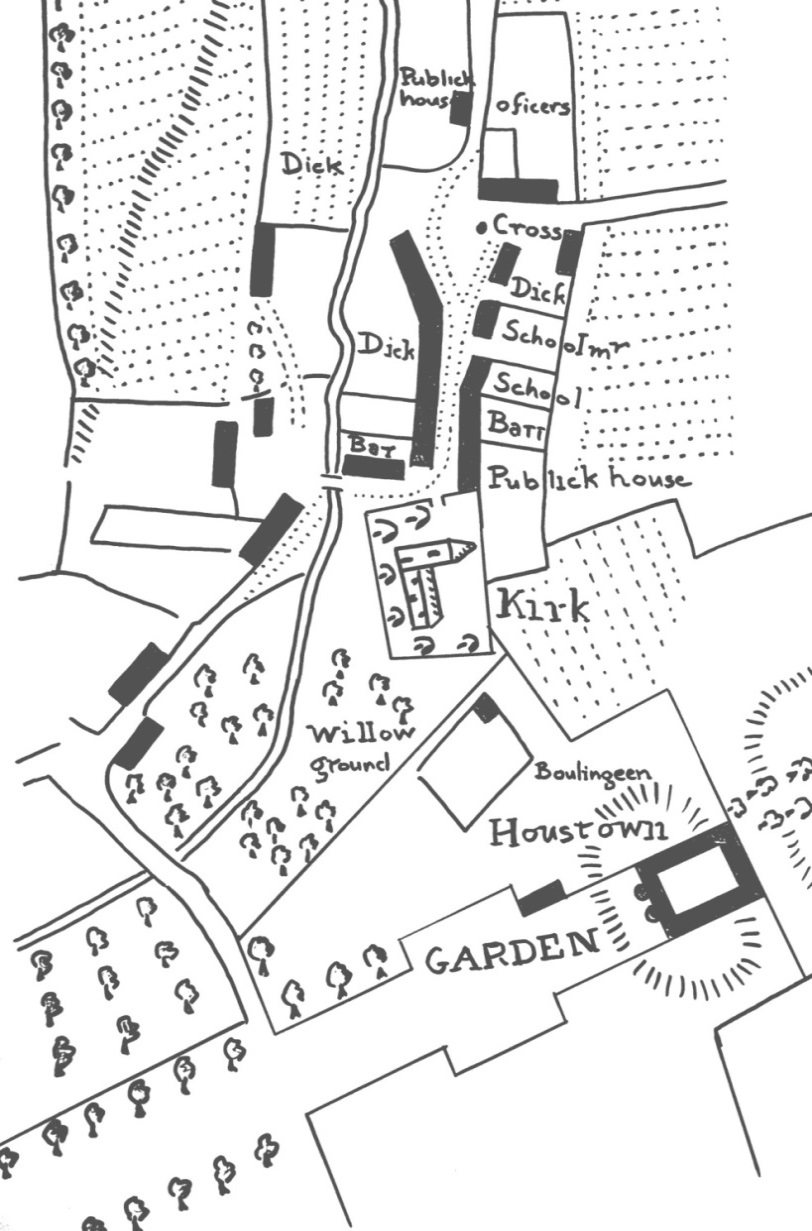 Due to the changes of owners and transformation of the estate around the time of the forming of the planned village, there was little evidence to confirm these descriptions. However the newly discovered estate plans, c.1780, show that the descriptions weren’t fantasy, but were in fact correct. They show a large square keep with a central courtyard, elevated on a mound. Even the turrets flanking the entrance can be seen on the plan.
Due to the changes of owners and transformation of the estate around the time of the forming of the planned village, there was little evidence to confirm these descriptions. However the newly discovered estate plans, c.1780, show that the descriptions weren’t fantasy, but were in fact correct. They show a large square keep with a central courtyard, elevated on a mound. Even the turrets flanking the entrance can be seen on the plan.